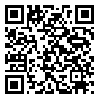دوره 23، شماره 1 - ( 12-1403 )
جلد 23 شماره 1 صفحات 0-0 |
برگشت به فهرست نسخه ها
Download citation:
BibTeX | RIS | EndNote | Medlars | ProCite | Reference Manager | RefWorks
Send citation to:



BibTeX | RIS | EndNote | Medlars | ProCite | Reference Manager | RefWorks
Send citation to:
Bouzaboul M, Abidli Z, Ait Ali D, Rami Y, Amraoui J, Hadri A, et al . Neurocognitive Evaluation of Visual Perception and Working Memory Using the Anoto DP-201 Digital Pen Among Middle School Students with Learning Difficulties in the Moroccan Middle Atlas: A Case-Control Study. Iranian Rehabilitation Journal 2025; 23 (1)
URL: http://irj.uswr.ac.ir/article-1-2417-fa.html
URL: http://irj.uswr.ac.ir/article-1-2417-fa.html
Neurocognitive Evaluation of Visual Perception and Working Memory Using the Anoto DP-201 Digital Pen Among Middle School Students with Learning Difficulties in the Moroccan Middle Atlas: A Case-Control Study. مجله انگلیسی زبان توانبخشی. 1403; 23 (1)
چکیده: (582 مشاهده)
Background and Objectives: This study investigates the relationship between visual perception, working memory, and academic performance among middle school students with learning difficulties in the Middle Atlas region of Morocco. Specifically, it examines how these cognitive factors impact academic performance and highlights the importance of neurocognitive evaluation.
Methods: This study employed the Anoto DP-201 pen, a computerized tool used in neuropsychology, to assess visual perception and working memory. The research involved a sample of middle school students with learning difficulties and a control group. The Rey-Osterrieth complex figure test-copying phase was utilized to measure accuracy scores in visual perception tasks.
Results: The learning-disabled group had a lower mean accuracy score (59.98 ± 11.34) than the control group (66.68 ± 3.72). Statistical analysis using an independent sample t test indicated a statistically significant difference between the two groups (t = 4.44, P < 0.000), highlighting the disparity in accuracy scores in the Rey-Osterrieth complex figure test - copying phase copying phase.
Conclusion: The findings suggest the critical role of neurocognitive evaluation in identifying students with deficits in visual perception and working memory. This study emphasizes the need for a multidisciplinary diagnostic approach to effectively manage and remediate cognitive challenges in learners with learning difficulties. Using the Anoto DP-201 pen provides valuable insights into the neurocognitive profiles of students and supports targeted interventions to enhance academic performance.
Methods: This study employed the Anoto DP-201 pen, a computerized tool used in neuropsychology, to assess visual perception and working memory. The research involved a sample of middle school students with learning difficulties and a control group. The Rey-Osterrieth complex figure test-copying phase was utilized to measure accuracy scores in visual perception tasks.
Results: The learning-disabled group had a lower mean accuracy score (59.98 ± 11.34) than the control group (66.68 ± 3.72). Statistical analysis using an independent sample t test indicated a statistically significant difference between the two groups (t = 4.44, P < 0.000), highlighting the disparity in accuracy scores in the Rey-Osterrieth complex figure test - copying phase copying phase.
Conclusion: The findings suggest the critical role of neurocognitive evaluation in identifying students with deficits in visual perception and working memory. This study emphasizes the need for a multidisciplinary diagnostic approach to effectively manage and remediate cognitive challenges in learners with learning difficulties. Using the Anoto DP-201 pen provides valuable insights into the neurocognitive profiles of students and supports targeted interventions to enhance academic performance.


